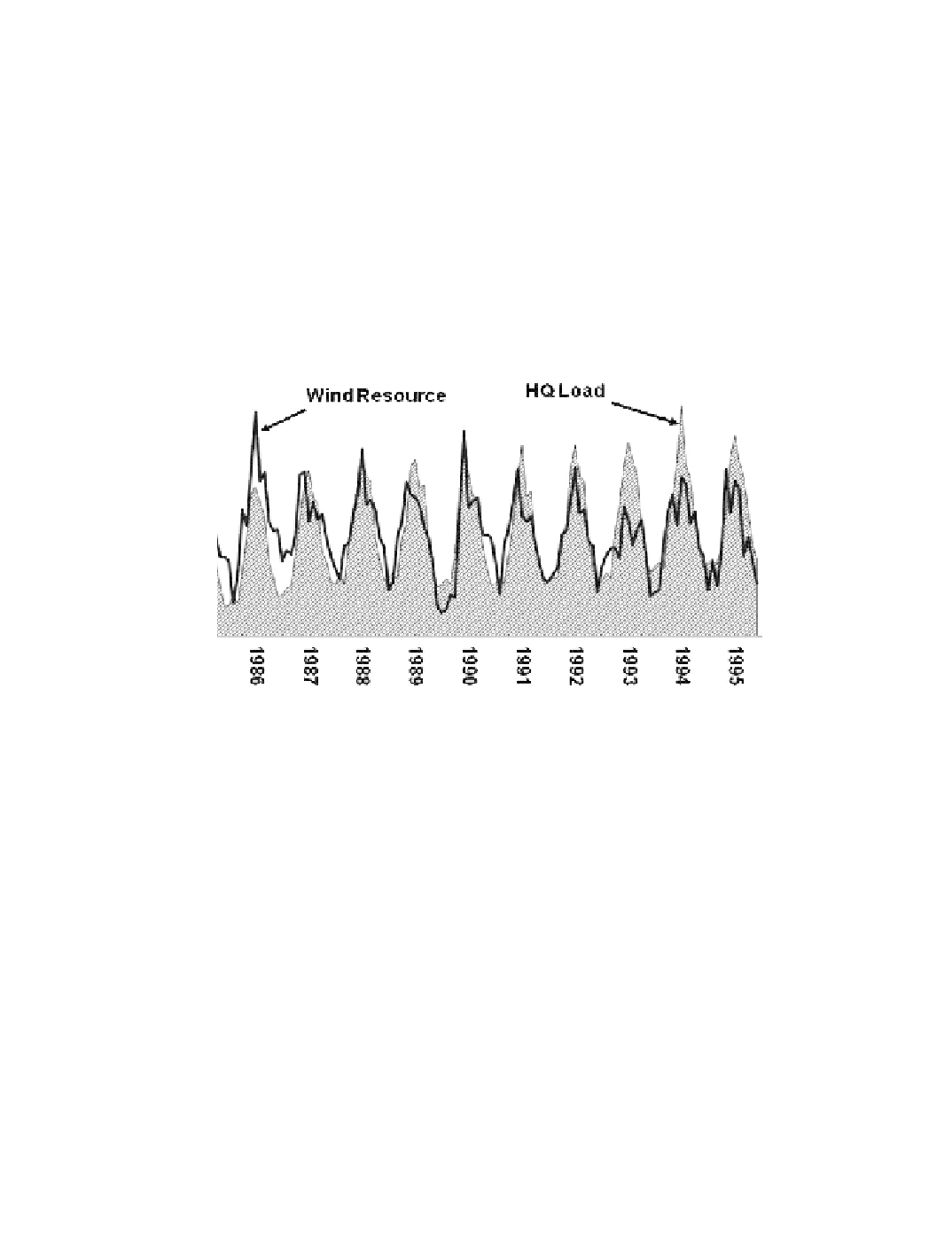Environmental Engineering Reference
In-Depth Information
is a major study conducted by the
New York State Energy Research and Development Au-
thority
[NYSERDA 2005, Piwko 2005]. Potential impacts on the existing grid systems were
analyzed and this study concluded that the New York bulk power system can reliably accom-
modate at least 0 percent penetration, which would be 3,300 MW of wind generation, with
only minor adjustments to its existing planning operational, and reliability practices.
Integrating the output from wind plants with other variable sources can even be ben-
eficial. This is especially true in regions with hydro-based generation. Several project fea-
sibility studies in the United States, Canada, and Russia have shown that windy periods in
winter can provide power when most water resources are frozen and that the lower wind
periods tend to occur during the spring and summer hydro runoff. A 0 year comparison
of 800 MW of wind power from Vermont compared well with the
Hydro-Québec
load, as
shown in Figure 4-32. This study also examined the economic impact on the value of wind
by using hydro resources in Canada as storage. The value of wind could be up to 22 percent
higher than selling it on the spot market [Ancona
et al.
2003]. Similar results were found in
Northwest Russia.
Figure 4-32. Beneficial match between seasonal variations in the Vermont wind re-
source and the Hydro-Quebec utility electric load over a 0 yr period.
Concerns about the variability of wind-generated power on grid control systems have
largely been proven to be unfounded, but these concerns still persist. Several factors that tend
to mollify impacts of variable output of a large wind power station include the following:
-
slow variation of average wind speeds compared to normal grid power fluctuations
-
spatial diversity of wind speeds over the station area
-
geographic separation of stations within a utility's service area
Wind plant output does vary with time, but not as rapidly as might be expected from wind
variations at a single location.
High-wind-penetration economic and technical issues have been studied in many cases
in the United States and in Europe, and there are added costs when
spinning reserve
plant
cycling is necessary to accommodate variations in wind power output. More than a dozen
studies of different U.S. utility systems have shown that wind integration costs are well be-
low $0/MWh and typically below $5/MWh, for wind capacity penetrations as high as 30
percent of peak load. The results of these studies are summarized in Table 4-0.

Search WWH ::

Custom Search